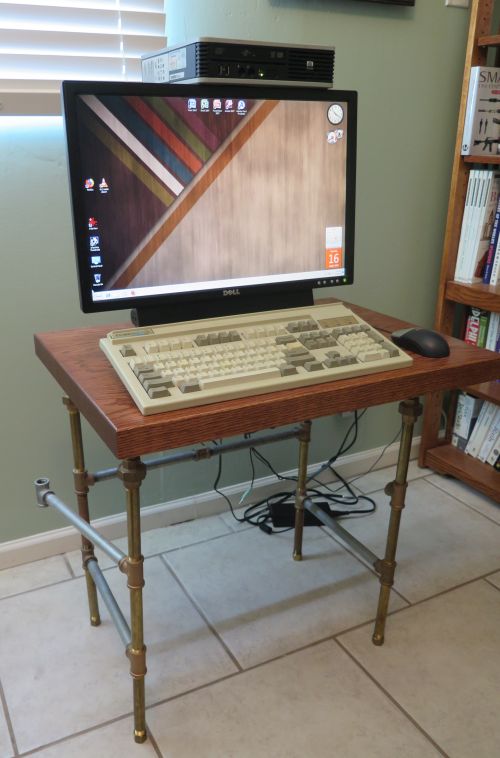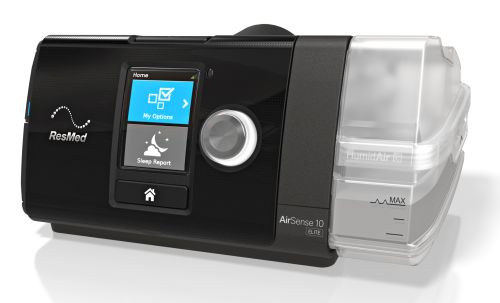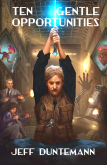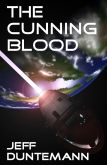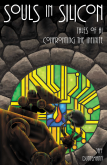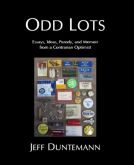A year ago this past May, one of my doctors suggested that my lack of energy might be due to sleep apnea. Carol verified this; she has heard me stop breathing numerous times while lying beside me in bed. The doc prescribed an at-home “headband” sleep study, which at least verified his suspicion of apnea. The device (which was just that: a headband with electrodes) recorded an AHI of 33. Basically, I would stop breathing 33 times an hour. This seemed excessive and still does, for reasons I’ll explain a little later. But the next step was obvious: He handed me a prescription for an APAP machine. “APAP” is an adjustable pressure CPAP. The machine senses your breathing, and sends enough air through the hose to keep you breathing, no more.
I shopped around online, and got an NOS (new, old stock) ResMed S10 Auto. It was half the price of a new machine, even though it was still sealed in its original packaging. I bought a couple of different masks, and gave them all a good shot.
At first it made me nuts. I have never been a strong sleeper, and having this thing strapped to my face all night kept me awake. The full-face mask that most people use was a non-starter. I used a few other types of mask, and finally found that I could actually sleep a little using a “nasal pillows” mask, which has these two little soft silicone pads on a single strap that goes behind your head. The two pads each has a tube protruding from the middle, and those tubes go into your nostrils, while the soft pads keeps a good seal. Ok, a reasonably good seal. I still have problems with leaks around the edges of the pads, but that doesn’t negate the machine’s effectiveness.
It still kept me awake. So the doc put me on a new sleeping pill called Belsomra (Suvorexant) which, rather than sedating you, helps neutralize stimuli that prevent you from sleeping–like an APAP mask. And damn, it worked! I slept better than I had in a long time, with no interruptions but my two canonical bathroom breaks.
With the machine in operation, I was throwing just a few “events” every night. There are several kinds, and I don’t have the space to describe them all here. My personal favorite is hypopnea, which is shallow breathing, not airway obstruction. The doc said it doesn’t interrupt sleep. Some of the others I’m still not sure I understand, like Cheyne-Stokes Respiration; but that’s ok, as I think I’ve had it exactly once in thirteen months.
The S10 records everything it senses during the night on an SD card. You can pop the card out and read it any time. My correspondent TRX put me on to a free app called Sleepyhead, which takes the data from the card and throws up all kinds of graphs for Windows, Mac, and Linux. The damned thing literally graphs the shape of every single breath you take. You can see when you stop breathing, along with the following spike in pressure to open your airway again.
Ok. Now it gets a little odd, and a little disappointing. For the first six months I recorded AHIs of .5 to 7, which isn’t bad, especially compared to where I was starting from. The problem is, I still felt the profound lack of energy that’s been dogging me now for several years. I felt a little better, but I wonder if that was just the sleeping pill keeping me from reacting to dogs yipping in their sleep chasing archons in the akasha, or the drip system cranking up in the middle of the night. I stopped using the machine for a week. I didn’t feel any worse, nor better.
I’m still using it. I’ve worked out the optimal sleeping position through a year of trial-and-error: On my right side, with my head on a firm pillow, leaning back just a little to keep the mask from smooshing off my face due to pressure from the pillow. The data the S10 gives me showed me a few significant things: My AHI goes through the roof when I sleep on my back; something like 7-10. Oddly (and so far inexplicably) my AHI also goes up sharply when I sleep on my left side. Nobody can tell me why. So I sleep on my right side. I have to prop my right knee on a second pillow, but it works.
And now it gets more interesting still: I had been slowly putting on some weight for a year or two. So in February I cut my carb intake to as close to zero as I could manage, without starving myself. (Starving yourself doesn’t work. Really. What you might lose, you then gain back after the diet stops, and then some.) My weight went down from 163 to 148-150. It took a couple of months of this for me to notice, but eventually I saw it: As I lost weight, my AHI imploded. At the end of March I had my first perfect night: The S10 recorded no events at all, nothing. As spring continued, I saw my record improve even more: I started having perfect nights regularly, and then two or three (and once, four) in a row.
Carol mentioned something over breakfast one morning: I had lost weight in my face and my neck. I’ve never been seriously overweight, but I’ll be 67 in a week or so, and I’m trying to keep my A1C down to avoid Type 2. I was actually trying to eliminate visceral fat around my waist as much as possible. I didn’t even think I had fat in my face to lose.
I still haven’t regained my energy (which is one reason you don’t see as many Contra entries as you used to; I’m pouring most of what energy I have now into my fiction) and that problem remains unsolved. Maybe I’m just old. I don’t know. Coffee helps some. Beyond that, I’m out of things to try.
My only remaining theory is this: That headband sleep study was bogus. I suspect it was interpreting me jerking around in my sleep as apnea events–I’m an “active” sleeper and always have been. So although I did have sleep apnea, it wasn’t nearly as bad as the headband claimed. That said, I think the S10 has improved the quality of my sleep, which is beneficial in many ways beyond personal energy. This is why I continue to use it. My point here is that quality of sleep is not behind my energy deficit.
I’m still trying to figure that out. In the meantime, if you think you have apnea (spousal reports are good, and even a bad sleep study will give you some broad hints) I recommend two things:
1. Get yourself a recording APAP machine like the ResMed S10. Download Sleepyhead and watch your data, daily if possible. Development on the app has stopped, but it’s still available and works fine. You will learn a lot about how your sleeping position (and weight) affect your breathing.
2. Lose weight. This is good for lots of reasons (Type 2 being most important) but I’m pretty sure at this point that facial and neck fat are huge amplifiers for a tendency to apnea.
I’ve gone on long enough here for this busy morning, but if what I’ve experienced this past year will help my readers, it’s well worth it. Good luck. Cut carbs. Animal fat will not hurt you. (Certain vegetable oils will.) Sleep as much and as well as you can, even if it takes a machine to help you get there. Even (Gasp! The horror!) go to bed at 9 PM if that’s what it takes to get eight hours in before you have to go back to work or school. And pills; Belsomra is something entirely new in the human pharma cabinet. It is utterly unlike the nenzos or Z-drugs. Look into it if you have trouble sleeping.
More as I learn it. Let me know how you do, if you happen to be on this path as well.



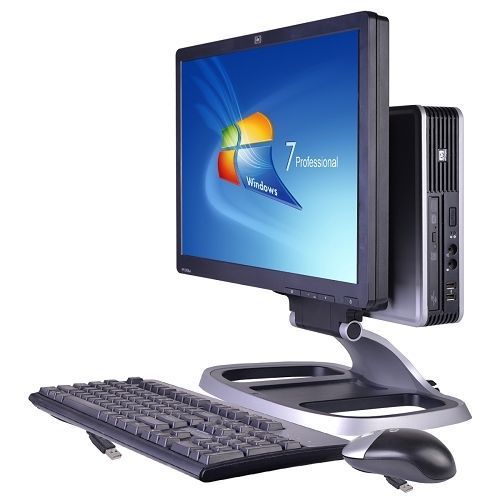
 The HP monitor stand is nice, certainly nicer than Dell’s. The dc7900 did not come with an internal speaker, but given the size of the speaker (my first machine has one) I doubt it’s good for much more than beeps. And if I ever want one, I can get a NOS unit on eBay for $5. (
The HP monitor stand is nice, certainly nicer than Dell’s. The dc7900 did not come with an internal speaker, but given the size of the speaker (my first machine has one) I doubt it’s good for much more than beeps. And if I ever want one, I can get a NOS unit on eBay for $5. (